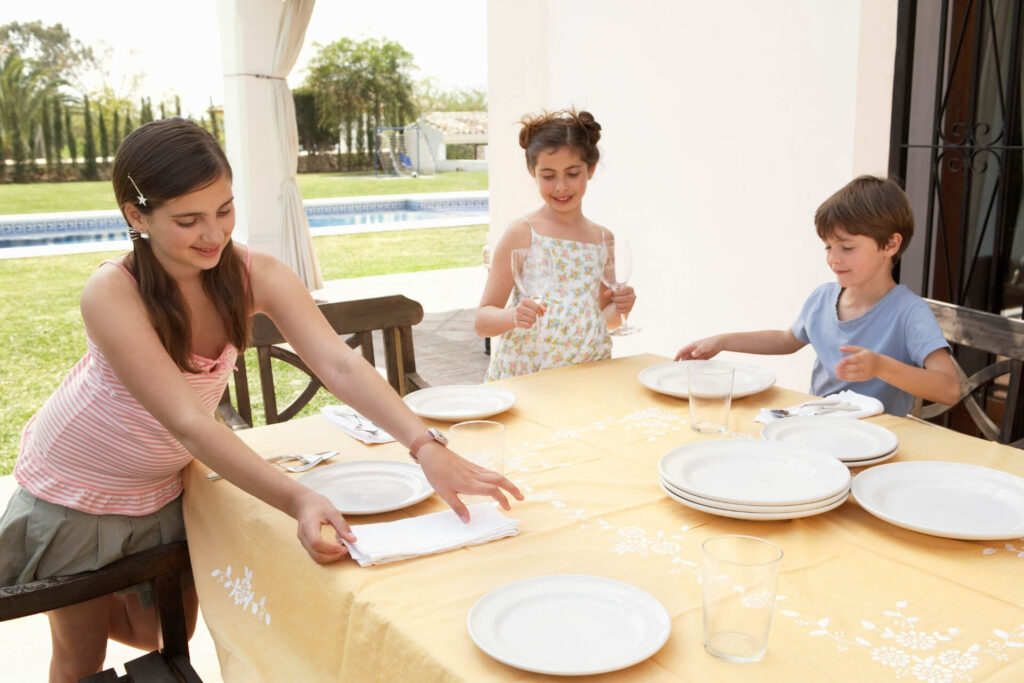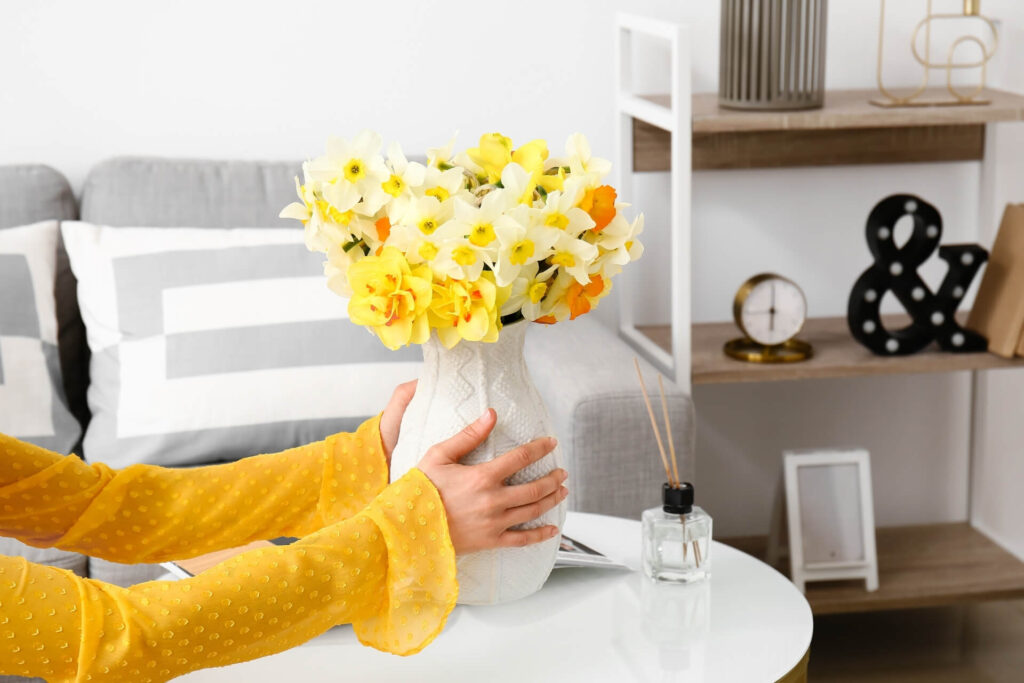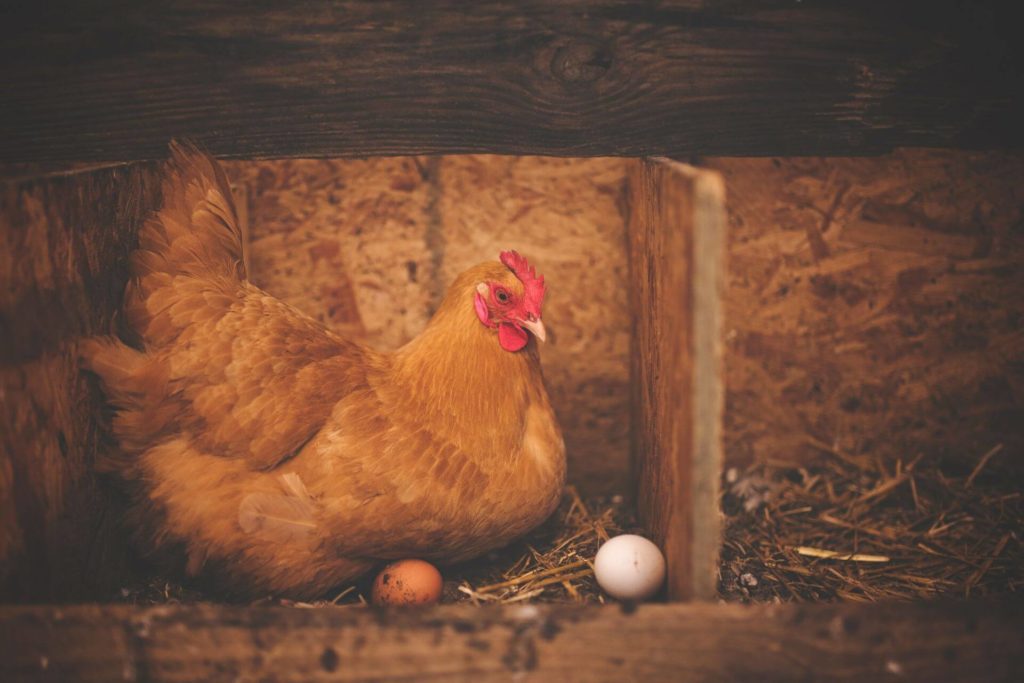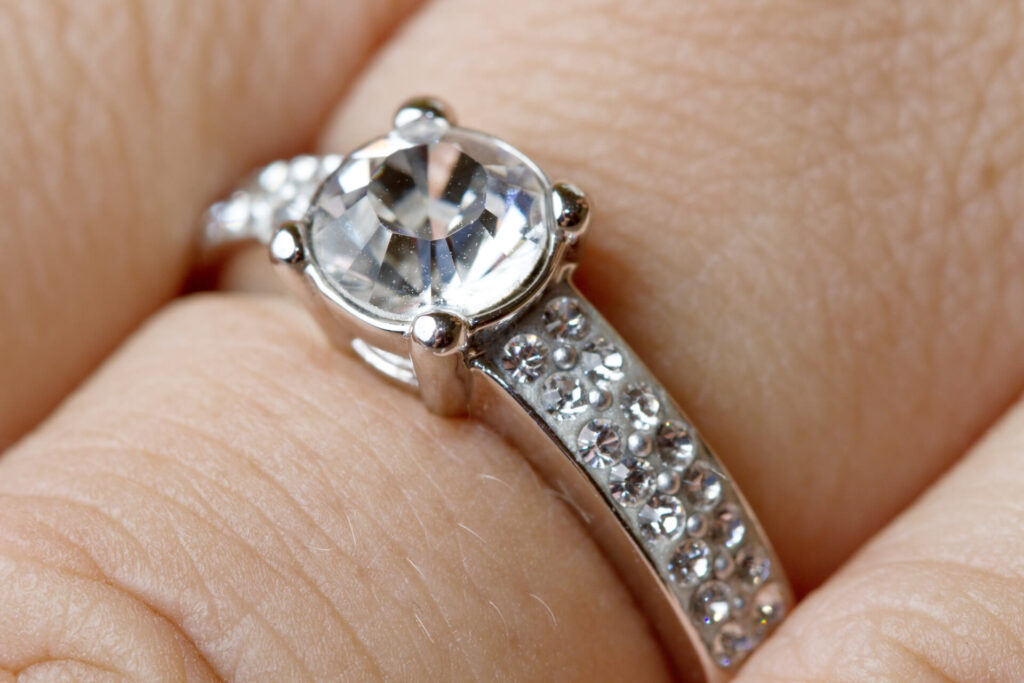英語の色々な「置く」のニュアンスー「put/set/lay/place」の違い

「set」は「定められた位置にしっかりと設置する」
set
英語には、色々な「置く」に当たる英語があります。
「set」もその一つで、「定められた位置にしっかりと設置する」ニュアンスです。
Ex) They set the table for lunch.
(彼らは昼食のためにテーブルをセットした)

定められた場所にピシッと設置していますよね。
そのため、「set」には「きちんと、丁寧に」というニュアンスがあります。
指輪のダイヤモンドも当然ですが、「決められた位置」に丁寧に配置されているので、動詞は「set」を選びます。
また、日にちを決める時にもよく「set」を使います。
We set the date for the party.
(私たちはパーティの日にちをセッティングした)

これもピシッと設置するニュアンスですね。
ちなみに「日の入り」のことを「サンセット(sunset)」と言いますが、これも「決められた位置に沈む」ためです。
The sun sets in the west.
(太陽は西に沈みます)

「set」の例文を少し
紹介します。
- ”On your mark, get set, go!”
(位置について、よーい、ドン!) - I’m all set.
(準備万端です=全て整っています) - I set a goal to lose 5kilograms by the end of the year.
(私は年末までに5キロ落とす目標を立てた) - His behavior sets a good example for the rest of the children.
(彼の行動は残りの子供たちに良い規範を示した)
「set a goal=目標を立てる」「set a good/bad example(良い/悪い範を示す)」の他にも、「set a deadline=締切を決める」「set a standard=基準を設定する」など、色々な使い方がありますが、全てピシッと設置するニュアンスが共通していますね。

その他の「置く」に当たる動詞
put
基本動詞「put」は「置く」を表す最も一般的な動詞で、そのコアイメージは「モノや事をある場所、または状態に置く」です。
She put the vase on the table.
(彼女は花瓶を机の上に置いた)

そして「put」は必ず、「場所や状態を表す語句(副詞や前置詞など)」と組み合わせて使います。そのため、「I put the vase.」は英文としては意味を為しません。
例えば、身に付ける行為は基本的に「put on」で表現します。「on」は「接触」のニュアンスなので、ピタッと密着させるイメージですね。
He put on his jacket over his shirt.
(彼はシャツの上にジャケットを羽織った)

しかしながら、入れ歯の場合は「put on」ではなく、「put in」で表現します。
というのも、入れ歯は「口の中」に入れるからです。
He put in his dentures.
(彼は入れ歯をはめた)

ここは前置詞などの感覚と、セットで覚えていかないといけません。
少し、「put」の例文を紹介します。
- Put your hand up if you need more paper.
(もっと紙が必要なら、手をあげて下さい) - You should put more pressure on him to be more responsible.
(君はもっと彼に責任感を持ってもらうように、プレッシャーをかけるべきだ) - Let me put it another way.
(違う言葉で言い直させて下さい) - Put your name here.
(名前をここに書いて下さい)
言ったりするのも、書いたりするのも「言葉を置く」行為の一つになります。
lay
「lay」は「長さや広さのあるものを、横たえたり、敷いたりする」ときに使う動詞です。基本的に平らに横たえる感覚です。
She laid her baby down for a nap.
(彼女は赤ちゃんをお昼寝のために横たえた)

ちなみに「lay」は「…を横たえる」他動詞で、もしも主語が「横たわる」のであれば、自動詞の「lie」を使います。

そして「lay」は「put」に比べて、「ソーッと静かに、動かさない」イメージがあります。
He’s laying bricks carefully.
(彼はレンガを注意深く置いている)

そして、ここから「(卵を)産む」という意味にも派生していきます。
The hen lays eggs every day.
(その雌鶏は毎日卵を産む)


例文を少し紹介します。
- Relatives laid wreaths on the grave.
(親戚は墓に花輪をたむけた) - The police laid a penalty on him for speeding.
(警察は彼にスピード違反の罰金を課した) - He laid emphasis on the importance of cooperation.
(彼は協力することの重要性を強調した)
罰則に「lay」が使われるのは、「動かさない」イメージがあるからでしょう。しっかり課しているニュアンスが出ます。
place
最後に「place」は「put」よりも語感的に固く、決まった場所にきちんと何かを置く時に使います。
I placed my hand gently on her shoulder.
(私は優しく、彼女の肩に手を置いた)

こちらも例文を少し紹介します。
- Her name was placed on the list.
(彼女の名前はリストに記載されていた) - They place great importance on both work and family.
(彼らは仕事と家庭、どちらにも重要性を置いている)
以上、「置く」に当たる英語表現でした。












